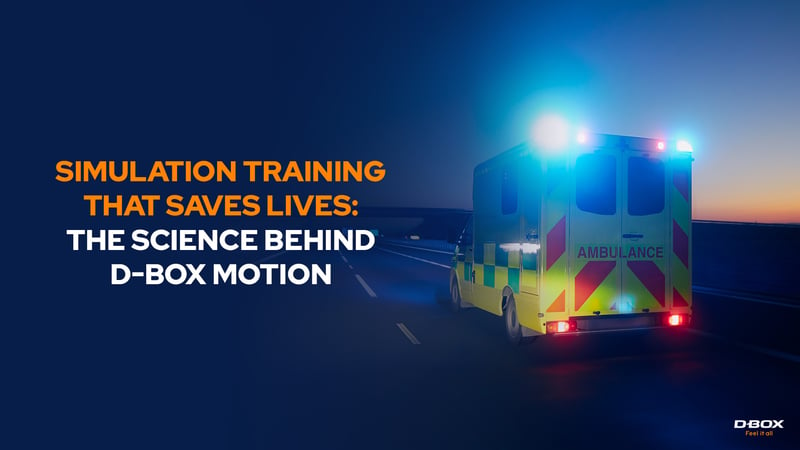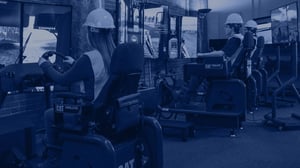Science backs it: D-BOX multi-sensory training = better results
Motion sickness
One of the biggest barriers to using VR or motion-based simulators in high-stakes training is motion sickness. When the brain sees one thing but the body feels something else, the mismatch can trigger nausea, dizziness, and disorientation. In fast-paced environments like emergency response, these side effects can break focus, cut training sessions short, and ultimately reduce effectiveness.
That’s where D-BOX haptics make a difference. Scientifically tested by Tech3Lab HEC Montréal, our motion system has been shown to reduce motion sickness from 18.6% of users down to just 3.8%. The secret? Our finely tuned motion cues sync with visual elements in real time—so what the body feels matches what the eyes see. This alignment helps the brain interpret the experience as real, reducing the chance of motion sickness and allowing trainees to push further, focus longer, and perform better.
Keeping calm
Teaching calmness in training can be tough. If the simulator doesn’t feel real, trainees may become distracted, uncomfortable, or even anxious, taking focus away from the actual task at hand.
The same study conducted by Tech3Lab showed that users who trained in VR with D-BOX motion felt 44.7% calmer than those using a static VR simulator. They also reported the experience as being 60% more comfortable, which means they could stay focused longer and retain more of what they learned.
The physical cues delivered by D-BOX create a more believable training scenario. The result? Less mental strain, more presence, and better long-term outcomes. For paramedics, police, and fire crews, that level of preparedness can mean everything.
Memory recall & muscle memory
Another study by Tech3Lab Université de Montréal proved that D-BOX haptic technology activates muscle memory, helping first responders lock in critical reactions by pairing physical feedback with visual and auditory cues. Whether it’s swerving to avoid a hazard, reacting to a mechanical failure, or controlling a vehicle on rough terrain, trainees build instinctive responses because they’ve felt the scenario before.
The study also proves that adding D-BOX haptics to a simulator boosts not just physical engagement, but emotional connection and cognitive immersion. Trainees report a heightened sense of presence and enjoyment, which ultimately leads to stronger memory formation. The result? Emergency responders who are better prepared to act quickly, confidently, and accurately when every second counts.
Real training requires science-backed motion
When lives are on the line, there’s no room for guesswork or hesitation. Simulators have the power to save lives—but only if they reflect the reality of emergency response.
D-BOX’s motion systems bring that physical layer into simulation, helping trainees build real muscle memory that can’t be taught with visuals or audio alone. They’re scientifically proven to reduce motion sickness, enhance calmness and better prepare trainees—so when the alarm sounds and the world tilts into chaos, they'll be ready since they’ve felt it all before with science-backed tech.



